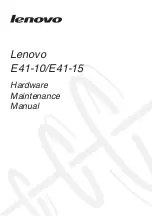
1
2
Knowing the Parts
Right Side
Refer to the diagram below to identify the components on this side of the Notebook PC.
1 2 3
5
4
6
7
4
8
2
3
4
1
5
Optical Drive
The Notebook PC comes in various models with different optical drives. The Notebook
PC’s optical drive may support compact discs (CD) and/or digital video discs (DVD) and
may have recordable (R) or re-writable (RW) capabilities. See the marketing specifica
-
tions for details on each model.
Microphone Input Jack
The mono microphone jack (1/8 inch) can be used to connect an external microphone or output
signals from audio devices. Using this jack automatically disables the built-in microphone. Use
this feature for video conferencing, voice narrations, or simple audio recordings.
2.0
USB Port (2.0/1.1)
The USB (Universal Serial Bus) port is compatible with USB 2.0 or USB 1.1 devices such as
keyboards, pointing devices, cameras, hard disk drives, printers, and scanners connected in a
series up to 12Mbits/sec (USB 1.1) and 480Mbits/sec (USB 2.0). USB allows many devices to
run simultaneously on a single computer, with some peripherals acting as additional plug-in sites or
hubs. USB supports hot-swapping of devices so that most peripherals can be connected or disconnected
without restarting the computer.
SPDIF Output Jack
This jack provides connection to S/PDIF (Sony/Philips Digital Interface) compliant de
-
vices for digital audio output. Use this feature to turn the Notebook PC into a hi-fi home
entertainment system.
S/PDIF
Headphone Output Jack
The stereo headphone jack (1/8 inch) is used to connect the Notebook PC’s audio out signal to
amplified speakers or headphones. Using this jack automatically disables the built-in speakers.
Summary of Contents for E3407
Page 1: ...Notebook PC Hardware User s Manual E3407 Oct 2007 ...
Page 10: ...10 1 Introducing the Notebook PC ...
Page 22: ...22 2 Knowing the Parts ...
Page 36: ...36 4 Using the Notebook PC ...
Page 62: ...62 4 Using the Notebook PC ...
Page 93: ...Appendix A A 31 ...
















































